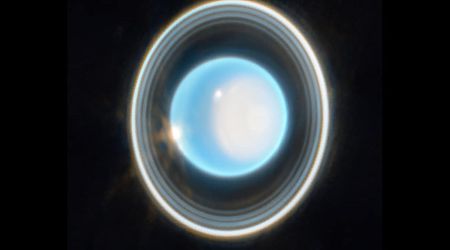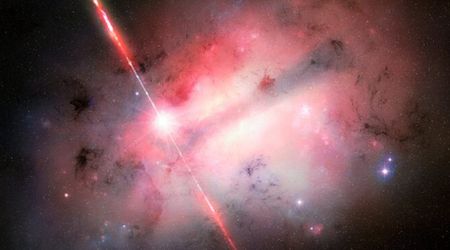Scientists stunned after discovering a massive exoplanet hidden in the dusty disc of a 'lonely' star

Astronomers have uncovered a massive exoplanet concealed within the dense gas and dust surrounding a young, 'lonely' star, finding that it challenges previous assumptions and could revolutionize the search for new worlds. For years, the star Mp Mus was thought to be an isolated cosmic body, its surrounding protoplanetary disk, the birthplace of planets, appearing smooth and empty. However, a team of international astronomers, led by researchers at the University of Cambridge, decided to take a second look, according to the University of Cambridge.

Using data from the European Space Agency's Gaia mission, researchers detected a subtle "wobble" in the star's movement. This gravitational tug, a tell-tale sign of a hidden companion, was initially dismissed due to the seemingly featureless disk. Meanwhile, Dr Álvaro Ribas of Cambridge’s Institute of Astronomy led new observations of the star with the Atacama Large Millimeter/submillimeter Array (ALMA).

By using a longer wavelength, the team was able to penetrate the disk's outer layers and discover what earlier observations had missed: a deep cavity and multiple gaps carved into the disk. This breakthrough confirmed that the star was not alone after all. By combining the Gaia and ALMA data with computer modeling, the team determined the wobble was caused by a gas giant, a planet less than ten times the size of Jupiter, orbiting close to the star. This discovery marks a significant milestone: it is the first time an exoplanet has been detected within a protoplanetary disk by combining the precise astrometry data from Gaia with deep-sky observations from ALMA. The findings published in the journal Nature Astronomy suggest that many other young planets may be hidden in plain sight, obscured by the very material from which they formed.

“We think this might be one of the reasons why it’s hard to detect young planets in protoplanetary discs, because in this case, we needed the ALMA and Gaia data together,” stated Dr. Ribas. He further added, “The longer ALMA wavelength is incredibly useful, but to observe at this wavelength requires more time on the telescope.” This innovative method offers a powerful approach for future research. Scientists hope to use similar techniques with upgraded telescopes to probe deeper into other protoplanetary disks, unlocking the secrets of planet formation and shedding new light on the origins of our solar system.

Now, a new study offers a compelling explanation for this perplexing phenomenon. A team of astronomers believes they have solved the long-standing mystery of "double hot Jupiters," the rare and bizarre cosmic arrangement where two scorching gas giants orbit a pair of stars. The key to their discovery lies in a gravitational dance known as the von Zeipel-Lidov-Kozai (ZLK) mechanism. The researchers propose that the unique gravitational forces at play in binary systems naturally pull these massive planets into their close, circular orbits. This theory provides a logical explanation for a celestial configuration that has long defied traditional planetary formation models.
This breakthrough not only sheds light on the existence of double hot Jupiters but also significantly deepens our understanding of how planets form across the cosmos. The finding challenges conventional wisdom, as lead researcher Dr. Yoruo Liu pointed out, since scientists generally anticipate that massive planets like these would originate much farther from their stars. This makes Hot Jupiters a fascinating paradox: they are relatively easy to observe but still hold secrets about their creation.









